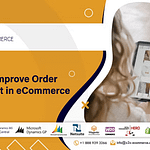The word ‘invoice’ is nothing new to us, even the common man must have come across this word as a customer, and it would be a part of your daily life if you are in the retail sector or ecommerce sector. To define the term as a formality, we could refer to it as a document, either physical or electronic, that contains the details of a certain transaction in terms of the item, volume, cost, etc. and is send to the buyer or customer by the seller or merchant. From the sellers’ perspective, this piece of document helps them keep track of their sales and purchases from suppliers also and ultimately create financial reports.
And from the perspective of the customer, it serves as proof of a transaction and helps them to either claim any warranty or guarantee or settle any legal disputes if any problem were to arise with the item or transaction. When this document is sent specifically to a customer of an ecommerce store then it is referred to as an ecommerce invoice. You must ensure that your process of generating invoice is at its best, so that the other related processes can work smoothly. In order to achieve this, let us look at some ways to improve your ecommerce invoice generation process:
1. Email the Invoice
First things first, you must make sure that you attach the invoice in the delivery box and also keep a copy inside the package. It is also advised to mail your customer an electronic copy of the invoice. These are all done by most of the ecommerce stores, so make sure that you too are following it, if not yet. There is a high chance that your physical document might get lost during the delivery process, which is why a mail is sent which has a lower probability of getting lost, unless someone intentionally deletes it. And of course, no one would want to delete such an important document.
2. Use the Opportunity to Promote Your Store
The best thing about invoices is that they are everywhere, and as retailer you must make use of this opportunity to promote your store or promote any new sale or offers. The invoice is being sent to the customer’s mailbox, it is attached in the delivery box, and even inside the packet containing the item, there is no way your customer’s eyes don’t fall upon them. And as an icing on the cake, you also get the chance to send customized offers or deals based on the items they’ve purchased and whether they are regular customers or not.
3. Mention ‘Terms & Conditions’
A really important thing to look out for is the ‘Terms & Conditions’ of your transaction or sale. Even if you might have mentioned it in your store or the item’s page, it is absolutely necessary to add it in your invoice. Doing so will not only give your customers a clarification about your terms, but most importantly it will be very useful for both you and your customer from a legal basis, if any issues were to arise. This also comes in handy when you are transacting with large clients. You can use your terms and conditions to legally claim any pending dues from your clients.
4. Add Dues in the Invoice
An invoice is often mistaken by many to be a document containing the current transaction details only. However, this is not true at all, a merchant can or rather must add any previous dues by the customer in the invoice. This can be added as additional charges or pending charges, and it also saves time and eases the process of collecting the due payments. You can also add your payment information like account details, payment modes, etc. to ease the payment process. Also try to add various types of payment modes, so that the customer also feels at ease while transacting with you through their preferred mode of payment.
5. Tax Details
Another important thing to include is the tax details which will include your tax numbers and the various taxes applicable on the purchased items. You must comply with the tax laws in your region while generating an invoice. You should take the utmost care about the various regional tax laws and make sure the charges are up to date if you are someone who does sales internationally. You should keep in mind that this is not only to showcase the cost breakout to the customers but also to simplify your work when you prepare your quarterly or annual financial reports.
6. Automate Invoice Generation
Finally, let’s talk about automating the invoice generation process. There are many POS softwares in the market like RMH that use the information available with you such as customer details, order details, payment details, tax rates, etc. to automatically create an invoice for the order and even sends it to the customer. You can make the process even easier by integrating this POS solution with your accounting software and automate general ledger entries. You can either create a new integration for your company or consult with integration providers like x2x eCommerce. x2x has the perfect integration for this purpose, the NetSuite – RMH integration.
If you take the tips discussed above into consideration, you will have a much more easier and efficient invoice generation process. Are you facing any difficulties in integrating your POS solution with your accounting software? x2x eCommerce is here to assist you with your business-related problems with reliability, stability, consistency, and affordability. To know if we offer integrations that support your software and for further details, make sure to reach us at sales@x2xe-commerce.com or 888-929-3266 and also grab a complimentary 1 Hour Demo of the integration services along the way.



